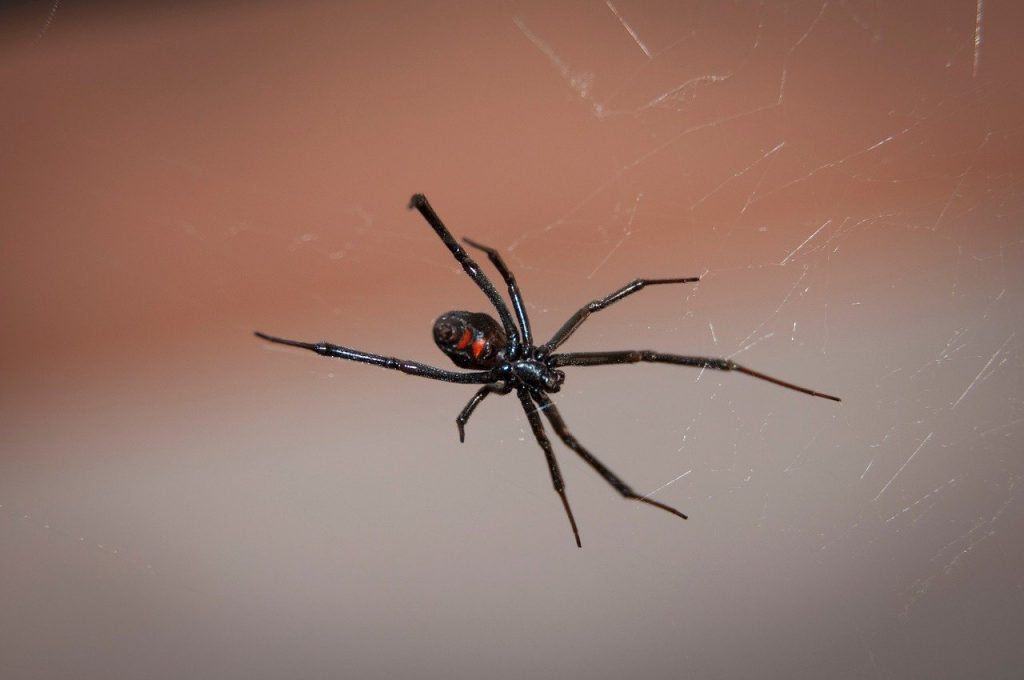Most North American spiders do not produce venom that causes dangerous reactions when they bite. However, a bite from a black widow and the brown recluse spider can be fatal in rare cases. If you are a first aid respondent, your first aid training will help you identify the signs and symptoms of these spider bites.
Identifying a Black Widow Spider Bite
The black widow spider is black but can be identified by the marking on its underside which is a reddish hourglass shape. Only spider bites from a female black widow are toxic.
The patient might not immediately know that they have been bitten, even though a bite by a black widow usually causes sharp pain and burning on the area of the bite that then dulls. A bite from a black widow spider leaves two puncture marks on the skin.
Patients may start to feel ill or notice a bump or swelling some time after the bite. The swelling will be raised, red and round, and may be accompanied by cramps felt in the muscles of the thighs, abdomen, shoulders and back.
Other signs to look for include anxiety and restlessness, headaches, dizziness, excessive sweating and weakness. Also, look out for numbness and increased saliva and sweating.
Identifying a Brown Recluse Spider Bite
A spider bite from a brown recluse, also known as the violin spider, may not produce any pain initially. A stinging sensation may develop in the area up to eight hours later. The spider can be identified by its light brown body and its darker brown mark on the upper body that is violin-shaped.
The 1-inch long spider is not aggressive and will only bite when trapped against the patient’s skin. Often, the bite may be painless but will start to burn and itch up to eight hours later.
After a bite, a blood-filled blister may form on the surface of the skin that will resemble a target or bulls-eye pattern. Without treatment, the blister can get worse and even kill surrounding tissue.
Other reactions to look out for include nausea, vomiting and joint pain. These reactions can even occur up to 72 hours after the spider bite.
On rare occasions, a bite from a brown recluse spider may cause a coma, seizures, jaundice or kidney failure. A patient may also notice blood in their urine.
Medical treatment may include antibiotics and the wound needs to be kept clean. Tissue death only occurs rarely in extreme cases.
According to the government of Toronto, there has never been any verified record of the Brown Recluse spider living in Ontario.
High-Risk Areas for Spider Bites
The black widow spider and the brown recluse spider live in secluded spaces and are rarely disturbed. Most bites occur when the patient reaches into their dark hiding places. These can be in a piece of wood, brush pile, rock or dark storage spaces.

Register for First Aid Training
Register today for a First Aid training course and learn how to deal with emergencies and keep your loved ones safe! Check out our facilities and book your spot now.
First Aid Treatment for Spider Bites
Spider bite symptoms that are severe need immediate attention and some people can even go into full-body shock. Spider bites should be treated within 24 hours, and doctors recommend that any person not up-to-date with their immunization should have a tetanus shot.
If you are applying first aid to a person with a non-venomous spider bite, wash the wound and apply a cold pack to the bite area.
Additionally, if the spider has been identified as a venomous one, you should keep the bitten area elevated and as still as possible. The patient must immediately be placed in the rapid transport category, and a chemical or ice pack needs to be applied to the bite.
When applying a cold pack to any patient, gauze or a thin, dry towel must be placed between the skin and the cold source to prevent freezing the skin tissue.

Once the person receives medical attention, the wound will be cleaned and the patient will be given medication to combat any inflammation and pain.
In the case of a black widow spider bite, doctors may prescribe an anti-venom shot to remove the venom. In children and older adults, prompt treatment is best.
If you wish to learn more about how to provide first aid for those who receive a spider bite, we highly recommend you register for a Standard First Aid & CPR/AED Level C course. This course will teach first aiders how to care for someone who has been bitten not only by spiders, but also mammals, ticks, snakes and marine life.


Questions About Your Course?
Our team is ready to help you with your questions. Don’t hesitate and contact us today.




















No comment yet, add your voice below!